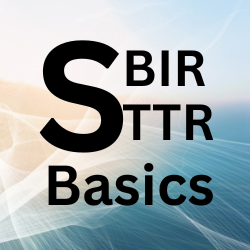Understanding Cash Payments and NIH Salary Cap Compliance
Securing a Small Business Innovation Research (SBIR) or Small Business Technology Transfer (STTR) award can be a transformative milestone for emerging companies. However, navigating the rules on allowable compensation, especially related to the NIH salary cap and partial payments, can trip up even the most well-meaning applicants.
One recurring issue surfaces when companies propose salaries that meet or fall below the NIH salary cap but only pay out, in cash, the portion charged to the award. This approach may seem compliant on the surface but can result in a compliance violation if not appropriately handled.
What the NIH Salary Cap Means for SBIR/STTR Recipients
The NIH sets a salary cap that limits the maximum annualized salary you can charge to NIH-funded grants. As of 2023, the cap is $203,700, so you cannot charge more than that amount per year for any individual working on an NIH-funded project, even if their actual salary exceeds that limit. Importantly, the salary cap does not dictate how much you can pay an employee. It only restricts how much of that salary you can charge to NIH funding.
Common Scenario: Salary Within the Cap, But Only Partial Cash Payment
Let’s consider this common scenario:
You propose paying your Principal Investigator (PI) $160,000 annually, below the NIH cap. You budget and charge 40% of the PI’s time to the SBIR project, equating to $64,000 from the award. However, you only pay the PI of $64,000 in cash, with no supplemental compensation from company funds or other sources.
On paper, it appears that you’re compliant, under the cap, and not charging the grant more than the allocated percentage. But in practice, this creates a compliance issue.
Why This Approach Can Violate Cost Principles
Federal cost principles under 2 CFR Part 200 (Uniform Guidance) and the NIH Grants Policy Statement require that costs charged to federal awards be:
- Allowable
- Reasonable
- Allocable
- Consistently applied
Suppose you pay only the portion of the salary charged to the award, not the full proposed base salary. In that case, the base salary becomes either the amount paid from the grant or the base salary is unsupported by payroll records. Either way, the federal auditors will likely conclude that the wage is not real or that you inflated the labor rate used.
In the example above, unless the Company actually pays the full $160,000 salary, it cannot charge 40% of that salary to the grant. Why? Because the award is supposed to cover only a share of real, paid compensation, not theoretical or paper-only wages.
Allowable Compensation: What SBIR/STTR Awardees Can and Should Do
To remain compliant while proposing competitive compensation:
Set a Real, Supported Base Salary
Establish and document base salaries through offer letters, guaranteed compensation agreements, board approvals, or internal HR policies. These salaries must reflect what the Company genuinely intends to pay its employees, not just what’s billable to the grant.
Pay the Full Salary
If your PI earns $160,000 and works 40% on the project, pay the full $160,000 from a combination of multiple sources (grants, operational cashflow, etc.). Then, the Company pays the full salary, and the grant covers its allowable proportional share.
Document Everything
Keep clear documentation of time and effort, payroll records, and funding sources. Ensure you can back up how you calculated compensation and funded non-grant salary portions.
Avoid “Grant-Only” Salaries
Basing salaries solely on the grant-funded portion creates a compliance red flag and may lead to findings in a financial audit. Just don’t do it!
What Happens If You Don’t Comply?
Noncompliance with compensation rules can result in:
- Repayment of grant funds
- Loss of current and future awards
- Potential liability under the False Claims Act
- Damage to your Company’s reputation and federal grant record
Even if a grant writer or consultant suggested the structure, your Company is ultimately responsible for ensuring compliance with all grant terms and federal regulations.
Key Takeaway
Charging the appropriate percentage of a salary to an SBIR/STTR award is only part of the equation. To remain compliant, your Company must also pay that full base salary in real dollars, not just the portion funded by the grant. If your actual compensation plan doesn’t match what you propose, your grant charges are not allowable, and your business could face serious consequences.
Build compensation structures based on truthful, supportable, and fully paid wages, and you’ll not only stay compliant, you’ll strengthen your credibility with federal agencies and build a solid foundation for long-term funding success.


